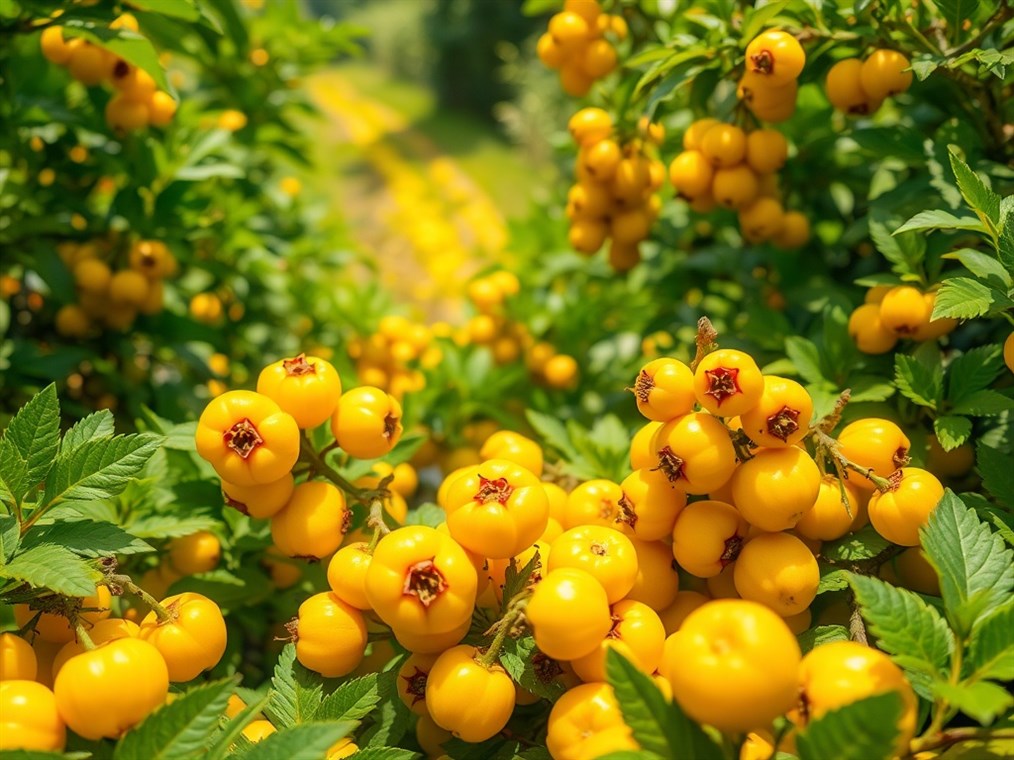Unlocking the Secrets of Yellow Berries: Are They Friend or Foe?
Yellow berries – they pop up in gardens and along trails, little bursts of sunshine in a green world. But here’s the thing: not all that glitters is gold, especially when it comes to these vibrant fruits. Some are downright delicious, a sweet-tart treat straight from nature’s candy store. Others? Well, let’s just say they pack a less pleasant surprise. So, how do you tell the difference between a yummy snack and a potential tummy ache? Let’s dive in!
First things first, what is a berry, anyway? You might be surprised! Forget what you learned from making fruit salad. Botanically speaking, a berry is a fleshy fruit that comes from a single ovary. That means grapes, tomatoes, even bananas, are all card-carrying members of the berry club. Strawberries and raspberries? Not so much. Go figure!
Now, spotting the good yellow berries from the bad ones takes a little detective work. Don’t just pop one in your mouth and hope for the best! Instead, play Sherlock Holmes with these clues:
- What kind of plant is it? Is it a towering tree, a sprawling shrub, a twining vine, or a humble little plant close to the ground?
- Leaf it to me! Take a good look at the leaves. What shape are they? How big? And how are they arranged on the stem?
- Flower power! If you can, check out the flowers. What do they look like? What color are they? When do they bloom?
- Berry nice to meet you! Size, shape, color variations – examine everything about that berry. Does it grow in a bunch, or all alone?
- Location, location, location! Where’s the plant growing? Deep in the woods? Out in an open field? Maybe even in your neighbor’s garden?
Okay, time for the fun part: the edible goodies! Here are a few yellow berries you can safely enjoy:
- Goldenberry (aka Cape Gooseberry): These little guys are wrapped in a papery husk, like tiny presents. They taste like a tangy explosion of sunshine. Plus, they’re packed with vitamins and some cool stuff called withanolides.
- Yellow Raspberry: Imagine a regular raspberry, but without the red. That’s pretty much it! They taste just like you’d expect and are fantastic straight off the bush. ‘Goldie’ and ‘Fallgold’ are popular varieties if you want to plant your own.
- Salmonberry: If you’re wandering around the Pacific Northwest, keep an eye out for these. They’re like raspberries, but can be yellow, orange, or even reddish. The flavor is mild and slightly sweet – perfect for jams.
- Guava: This tropical fruit turns yellow when it’s ripe and ready to eat. The sweet, aromatic flavor is amazing.
- American Persimmon: While often orange, some American persimmons can be a beautiful yellow. The fruit is sweet and delicious.
- Wild Strawberry: Some varieties of wild strawberry produce yellow berries that are kid-friendly with a strawberry-bubblegum flavor.
- Cloudberry: The cloudberry plant has white flowers, and the yellow-to-orange fruit resembles a raspberry. Fresh cloudberries are soft, juicy, and fairly tart and are safe to eat raw.
Now for the not-so-fun part. Some yellow berries are downright dangerous. Seriously, these aren’t worth the risk. So, listen up:
- Chinaberry: These trees produce small, yellow berries that are poisonous to humans.
- Western Soapberry: These trees produce small, poisonous, yellow, orange, or black berries.
- American Bittersweet: While the berries are orange-yellow, they are three-part capsules with a seed in each part that can cause stomach upset and diarrhea.
- Jerusalem Cherries (aka Christmas Orange): These guys look festive, but don’t be fooled! They contain solanine, which can cause all sorts of nasty problems, from stomach cramps to irregular heartbeats.
- Ivy Berries: These berries range in color from purple-black to orange-yellow and contain the toxin saponin, which may cause nausea, vomiting, and stomach cramps.
So, why bother eating yellow berries at all? Well, the edible ones are nutritional powerhouses! They’re often loaded with:
- Vitamin C: Your immune system’s best friend.
- Vitamin Great for your eyes, your immune system, and growing new cells.
- Antioxidants: Tiny warriors that protect your cells from damage.
- Fiber: Keeps your digestive system happy and your blood sugar stable.
- Carotenoids: Like lutein and beta-carotene, which are super important for healthy eyes.
One quick note: you might hear the term “golden berry” thrown around. This can be a bit confusing because it’s sometimes used for different types of berries. But most of the time, people are talking about Physalis peruviana, also known as the Cape Gooseberry.
Alright, let’s wrap this up with some essential safety tips:
- If in doubt, throw it out! Seriously, don’t risk it.
- Teach your kids! Make sure they know not to eat wild berries without asking an adult.
- Grab a guidebook! Or better yet, ask a local expert.
- Don’t trust the birds! Just because a bird can eat it doesn’t mean you can.
- If you think you’ve been poisoned, get help ASAP!
Yellow berries can be a delightful treat or a dangerous trap. With a little knowledge and a healthy dose of caution, you can enjoy the good ones and steer clear of the bad ones. Happy foraging!

